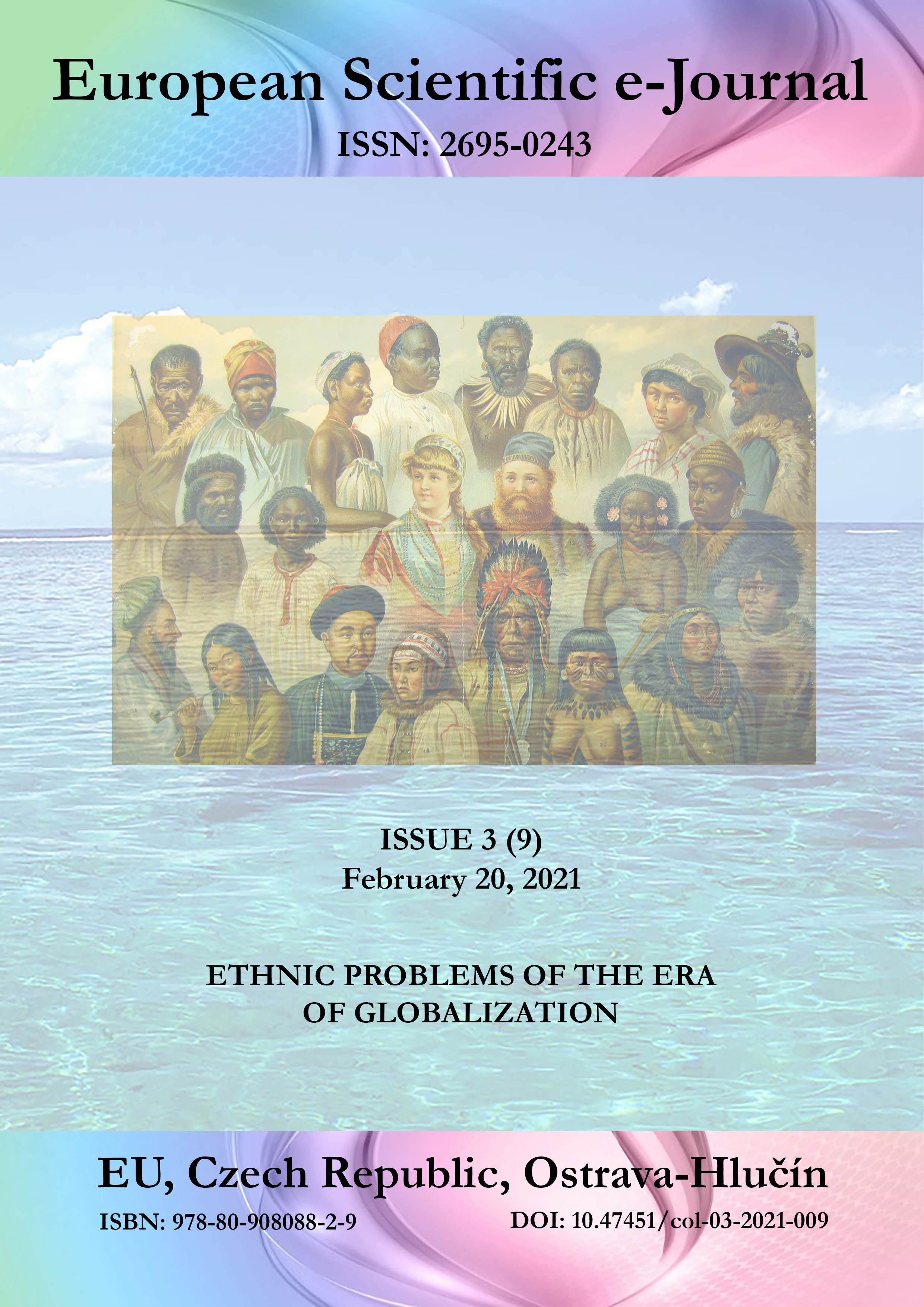Ethnic Problems of the Baltic Region
DOI:
https://doi.org/10.47451/eth2021-01-002Keywords:
Baltic States, Estonia, Latvia, Lithuania, Ostsee region, Ostsee Germans, Russian-speaking population, non-citizens, emigration, diasporasAbstract
The research is devoted to the ethnic problems of the Baltic region (the territory of 3 former Soviet republics – Estonia, Latvia, Lithuania). This topic remains relevant, despite the fact that these republics do not have a special global political, economic and cultural influence. The region has almost lost its industrial potential. In the Baltic States, the population is rapidly declining, returning to the figures of more than a century ago. The research shows the reasons why civil society has not developed in the Baltic States. The result is the fragmentation of society. The basis of the research is based on the historical method. Although there is a fairly significant scientific literature on the history of the region, mainly in Russian, this topic is usually reduced to the history of aboriginal peoples, which cannot be considered historically correct. The Baltic republics will gradually fade away, which will only paradoxically spur the struggle for these empty territories. The results of the study will be applicable in the field of ethnological research within the framework of the development of a single European space and the preservation of historical and cultural heritage.
Downloads
References
Ivanov, E. (2020, February 1). New revelations of statistics. Why the population of Lithuania is increasing, but the birth rate is falling. Baltnews. (In Russ.) https://baltnews.lt/ekonomika_online_novosti/20200201/1019719588/Strannaya-statistika-Pochemu-naselenie-Litvy-uvelichivaetsya-no-rozhdaemost-padaet.html
Kabuzan, V. M. (2009). Formation of the multinational population of the Baltic States (Estonia, Latvia, Lithuania, Kaliningrad region of Russia) in the 19th and 20th centuries (1795–2000). Мoscow. (In Russ.)
Karlov, V. V. (2010). Peoples of North-Eastern Eurasia in the 19th and 20th centuries. Moscow: KDU. (In Russ.)
Khazan, M. (2020, November 4). How the portrait of the Latvian emigration looks like? Baltnews. (In Russ.) https://lv.baltnews.com/mir_novosti/20201004/1024243526/Kak-vyglyadit-portret-latviyskoy-emigratsii.html
Koriavtsev, P. M. (2005). The Baltic Gambit. St Petersburg. (In Russ.)
Leagues: a real tragedy unfolds in the Estonian fields. (2020, June 21) Postomees. (In Russ.) https://rus.postimees.ee/7001865/ligi-v-estonskih-polyah-razvorachivaetsya-nastoyashchaya-tragediya
Manakov, A. G. (2017). Dynamics of the national composition of the population of Estonia and Latvia in the 1920–30s. Pskov Regionological Journal, 2(30), 77. (In Russ.)
Nosovich, A. (2019, June 21). The UN has shown the strategic doom of the Baltic States. Retrieved November 26, 2020, from https://www.rubaltic.ru/article/politika-i-obshchestvo/21062019-oon-pokazala-strategicheskuyu-obrechennost-pribaltiki/ (in Russian)
Ranking of the most powerful countries. (2019, December 16). Lenta. (In Russ.). https://lenta.ru/news/2019/12/16/power_rating/
Plakans, А. (2016). Brief history of the Baltic States. Moscow: Ves Mir. (In Russ.)
Pumpyansky, L. (1931). What do the numbers say? Bulletin of the Union of Russian Educational and Charitable Societies in Estonia, 3–7, 69. (In Russ.)
Russia 1913. (1995). Statistical and documentary reference. St. Petersburg. (In Russ.)
Rutkevich, M. N. (1992). On demographic factors of integration. Sociological Research, 1, 47–48. (In Russ.)
Suschiy, S. Y. (2018). Russians in the Baltic States-geodemographic trends of the post-Soviet period and perspectives of the first half of the 21th century. Population, 21, 3, 26. (In Russ.)
Tammaru, T., Kumer-Haukanõmm, K, & Anniste, K. (2020). The Formation and Development of the Estonian Diaspora. Journal of Ethnic and Migration Studies, 7, 1161–1163.
Vital, V. (2020, January 30). It is getting harder to hide your dislike for the Zarobitchans. Baltnews. (Estonia). (In Russ.). https://inosmi.ru/economic/20200130/246732331.html
Zetterberg, S. (2013). History of the Republic of Estonia. Tallinn. (In Est.)
Zhitin, D. V. & Ivanov, A. A. (2017). Demographic development in the Baltic countries. Scientific Reports of the Russian Association of Baltic Studies, 2. Social and Economic Development, 3. Moscow: Russian Book. (In Russ.)
Published
Issue
Section
License
Copyright (c) 2025 European Scientific e-Journal

This work is licensed under a Creative Commons Attribution 4.0 International License.
The European Scientific e-Journal (ESEJ) is an open access journal. Articles are available free of charge as PDF files on the website of the European Institute for Innovation Development. PDF files can be previewed with Acrobat Reader from www.adobe.com.
All articles of the “Tuculart Student Scientific” are published under a Creative Commons Attribution 4.0 Generic (CC BY 4.0) International license.
According to the Creative Commons Attribution 4.0 Generic (CC BY 4.0) International license, the users are free to Share — copy and redistribute the material in any medium or format for any purpose, even commercially (the licensor cannot revoke these freedoms as long as you follow the license terms).
Under the following terms:
- Attribution — You must give appropriate credit, provide a link to the license, and indicate if changes were made. You may do so in any reasonable manner, but not in any way that suggests the licensor endorses you or your use.
- No additional restrictions — You may not apply legal terms or technological measures that legally restrict others from doing anything the license permits.


